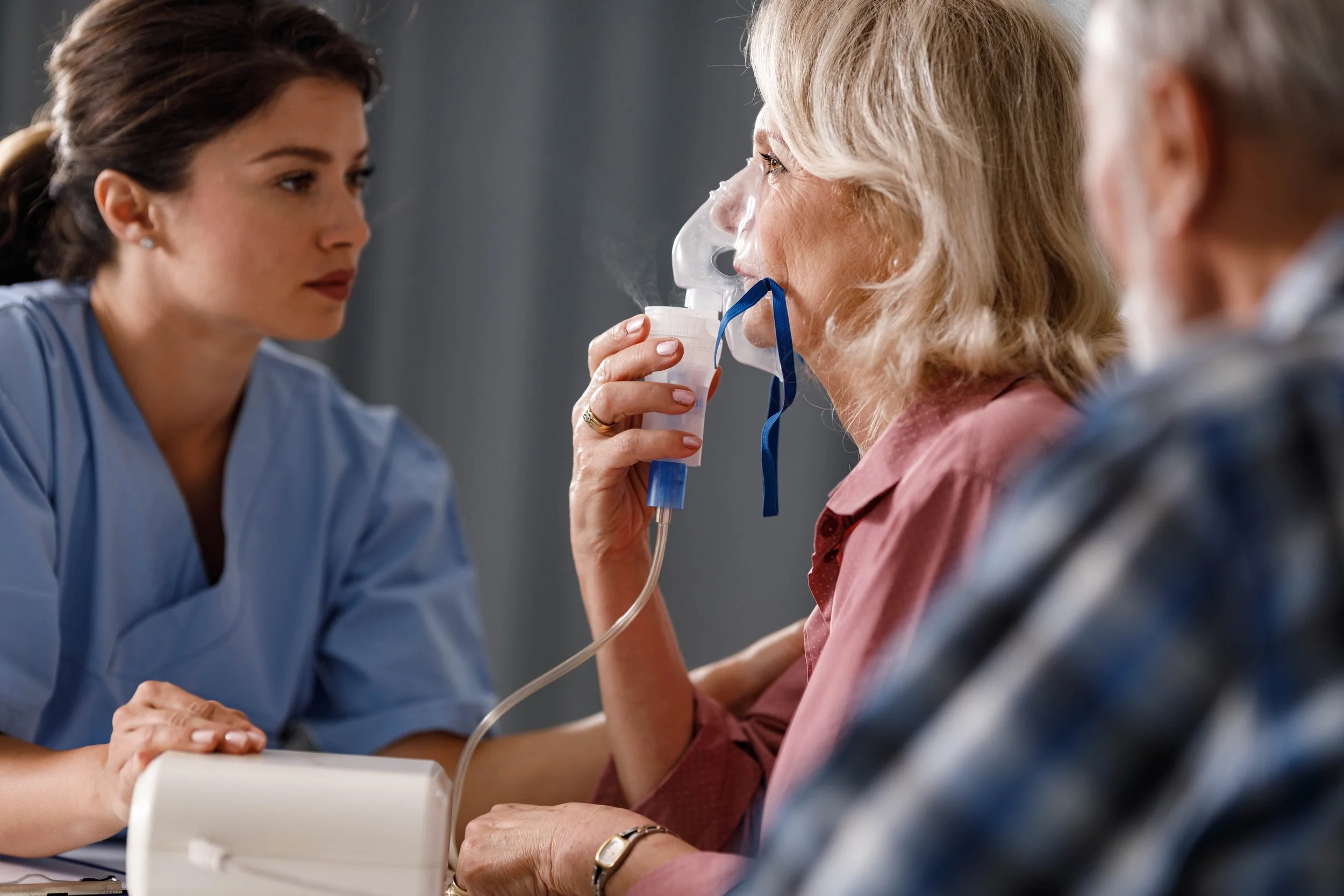Struggling with breathing? Tired of relying on oxygen, inhalers, and steroids? Listen to Janet Steward’s story.
Aerosolized-Nebulized PRP (aka Platelet Rich Plasma)
PRP has anti-inflammatory properties and can reduce inflammation in various respiratory conditions.
PRP can be administered directly to the lungs via a nebulizer to target lung tissue and treat conditions like asthma, emphysema, and pulmonary fibrosis.
PRP production involves taking a blood sample, centrifuging the whole blood to separate and concentrate the plasma and platelets. Then using the platelet-rich plasma for regenerative purposes.
Obtaining concentrated PRP with healing growth factors procedure:
PRP nebulizer treatment delivers the PRP serum to the lungs through a device resembling an oxygen mask, allowing the growth factors in PRP to have healing and regenerative effects on lung cells.
PRP nebulization involves the use of a nebulizer device. This nebulizer device converts PRP into a fine mist or aerosol. The PRP solution is loaded into the nebulizer device. The patient wears a mask or mouthpiece attached to the nebulizer. When the nebulizer is turned on, it creates airflow that passes through the PRP solution. The airflow breaks the PRP solution into small particles, forming a mist or aerosol. The patient inhales the mist or aerosol, allowing the PRP to reach the lungs.
Inhalation of PRP mist delivers growth factors and bioactive substances to the lung tissue for healing and regeneration.
The frequency and duration of PRP nebulization will depend on the specific condition being treated and the healthcare professional's recommendations. THREE sessions has been successful for patients like Janet Steward. She will be happy to speak with you about her experiences undergoing this therapy.
Fed up with that chronic cough and spitting out thick mucous (phlegm)? Weary of yet another nebulizer treatment? Check out Janet Steward’s story.
Platelets have traditionally been associated with hemostasis, wound healing, and tissue repair, but recent research suggests their involvement in antiviral activities and lung biology.
PRP therapies appear to counteract platelet loss by locally administering healthy donor platelet content, promoting the regeneration of damaged lung tissue, and reducing lung fibrosis.
Approach involves nebulizing PRP and delivering it to the respiratory system through inhalation to target the alveoli in the lungs.
The aim in the study was to develop a protocol for nebulizing PRP, evaluate its composition and bioactivity, and potentially apply it to COVID-19 patients to enhance recovery and prevent lung fibrosis.
Preliminary results indicate that nebulizing platelet lysate does not degrade the analyzed molecules or reduce their bioactivity on cultured lung fibroblasts' growth capacity.
Nebulized platelet lysate involves the preparation of a platelet concentrate in which platelets are centrifuged into a pellet and exposed to freezing temperatures, thereby lysing the platelet cell membrane, releasing platelet growth factors from the alpha granule and reconstituting in plasma.
Nebulized platelet lysate administration could restore the biological condition of the lung, eliminate the infection, and mitigate sequelae associated with COVID-19 and other respiratory infections.
Nebulized platelet lysate therapy directly targets damaged lung tissue, potentially providing a quicker anti-inflammatory response and promoting tissue repair compared to other regenerative medicine therapies.
https://pubmed.ncbi.nlm.nih.gov/33673372/ (This study specifically targeted COVID-19 respiratory attacks.)
PRP nebulization therapy is an area of research in many different respiratory diseases such as allergic asthma, COPD (chronic obstructive pulmonary disease, emphysema, pulmonary fibrosis, auto immune lung conditions like sarcoidosis, etc.
https://youtube.com/shorts/Pt1DCEfgcWE
Janet Steward will be happy to speak with you about her experiences undergoing this inhalation aerosolized-nebulized PRP (aka Platelet Rich Plasma) therapy
SMS 336.361.2396; Call 336.501.3796; Email: info@gsorejuvenation.com



